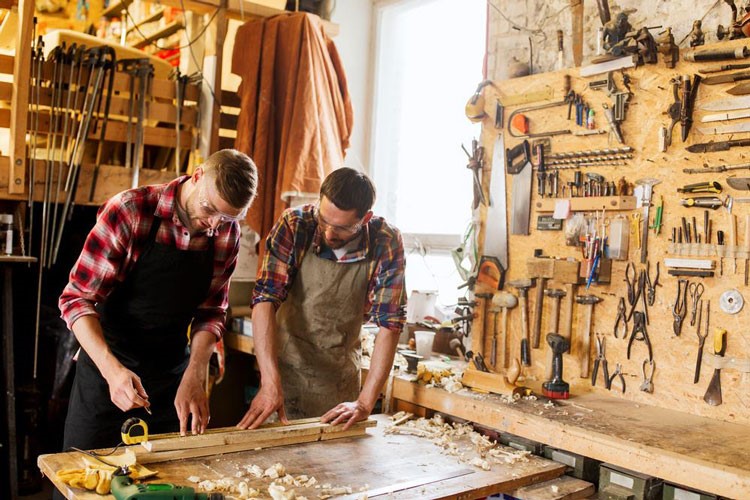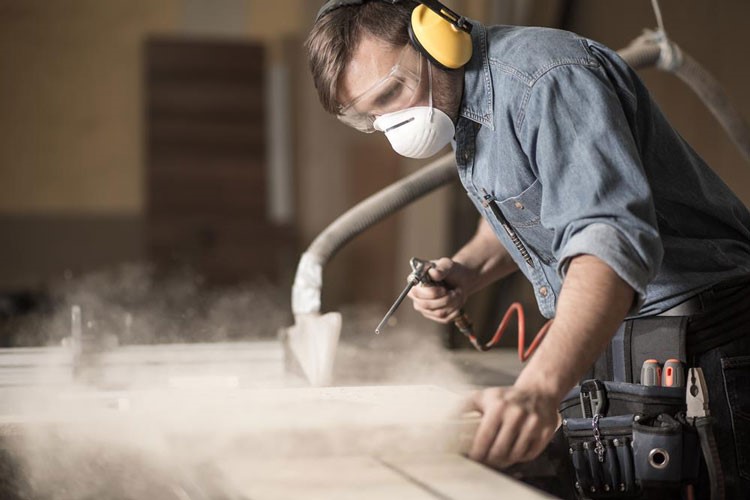
Woodworking industry is considered to be a risk-prone working environment since every working item and materials used present potential danger through accidents or health risk. The risks are also evident in any sub-category of the woodworking industry, and that can be seen in logging, pulp, sawmills, paper and woodworking workshops.
Many occupational risks in the woodworking industry are unavoidable, and it is upon the workers to take preventive measures. The risks can be well mitigated if workers are trained accordingly on how to deal with them and by establishing a safe working environment that adjusts and minimizes the presence of the risks. Here are some common risks felt in the woodworking industry and how they can be dealt with appropriately.
Wood dust

Wood dust is a common occurrence in any woodworking setup and workers who ignore routine preventive measures such as wearing protective masks often find themselves facing breathing difficulties. Wood dust is highly abrasive, and if inhaled in excess, it can cause blockages of the respiratory tract. There are also many instances in which wood dust is linked to some forms of cancers that develop in the lungs and the nose.
Sometimes, several preventive measures must be applied simultaneously to ensure that the occupational risks in the woodworking industry are brought to their minimum levels. As far as wood dust is concerned, industries must go a step further and invest heavily in ventilation systems. Efficient ventilation ensures that no excessive specks of dust remain on woodworking equipment such as router table or in the air. This step can greatly contribute to a safe and comfortable working environment.
Noise

Noise is unavoidable in almost any form of the woodworking industry. Continuous exposure to excessive noise could cause hearing problems among workers. Noise in the woodworking industry is mostly generated from machines such as chainsaws. The nature of the woodworking industry makes it impossible for its environment to be noise-free. Materials are always coming into contact with one another to cut, shape and align. Workers can best protect themselves from excessive noise by following strict discipline regarding wearing protective measures such as earplugs. In some instances, earplugs and earmuffs may not guarantee adequate protection. Industry managers are advised to reduce the number of working hours for workers who mostly deal with woodworking processes that generate excessive noise levels. An example of workers who fit in this category is those dealing with woodcutting processes using chainsaws and sanders. You can choose right sander here. http://www.thetoolsy.com/best-belt-sanders-reviews/
Flying wood and machine parts
Workers in the woodworking industry are also faced with potential accidents that can be caused by flying wood chips and some parts of machines that may get lost. Such materials are dangerous if they make contact with delicate parts of the human body and can induce long-term physical impairment. The supervisors in the woodworking industry must ensure that workers wear full protective gear such as eye goggles, helmets, earplugs, aprons, and gumboots at all times when handling woodworking processes.
Woodworking machines must be regularly inspected to check for any faults that they make their use potentially dangerous. Machines with loose joints can be catastrophic, and repair missions should focus on properly adjusting important components such as Forster bits. Woodworking machines inspections and repair should be done regularly and within reasonable schedules so as not to interfere with ongoing work.
Fires
Any slight fire scare can bring an entire woodworking firm to non-existence. Wood dust can easily ignite in the presence of flammable chemicals such as petroleum fuel. Any woodworking environment must be kept safe and free from any sources of ignition, and that starts by exercising keen judgment on how and where wood products are stored. Firefighting equipment installed in a woodworking workshop must operate efficiently and also be accessible in case of an accidental fire. Workers must also be sufficiently trained on how to safely store equipment such as chainsaws given that they run on highly flammable petroleum fuels.
Making a woodworking environment safe should not be taken for granted because there are many risks involved. People who are directly engaged in woodworking processes must follow all safety guidelines for their own well-being and the well-being of the fellow workers. If everyone is committed to safety, potential dangers would be avoided and workers would feel comfortable and motivated enough to be more productive.
Disclaimer: All images are provided by the author.
About The Author:
Danny L. Montgomery is the founder and owner of the blog zukzik.com. He is experts in woodworking. He loves to share everything about woodworking.




![[Infographic] Boating Accidents & Safety Guide Infographic](https://www.safeandhealthylife.com/wp-content/uploads/2017/03/Infographic.png)